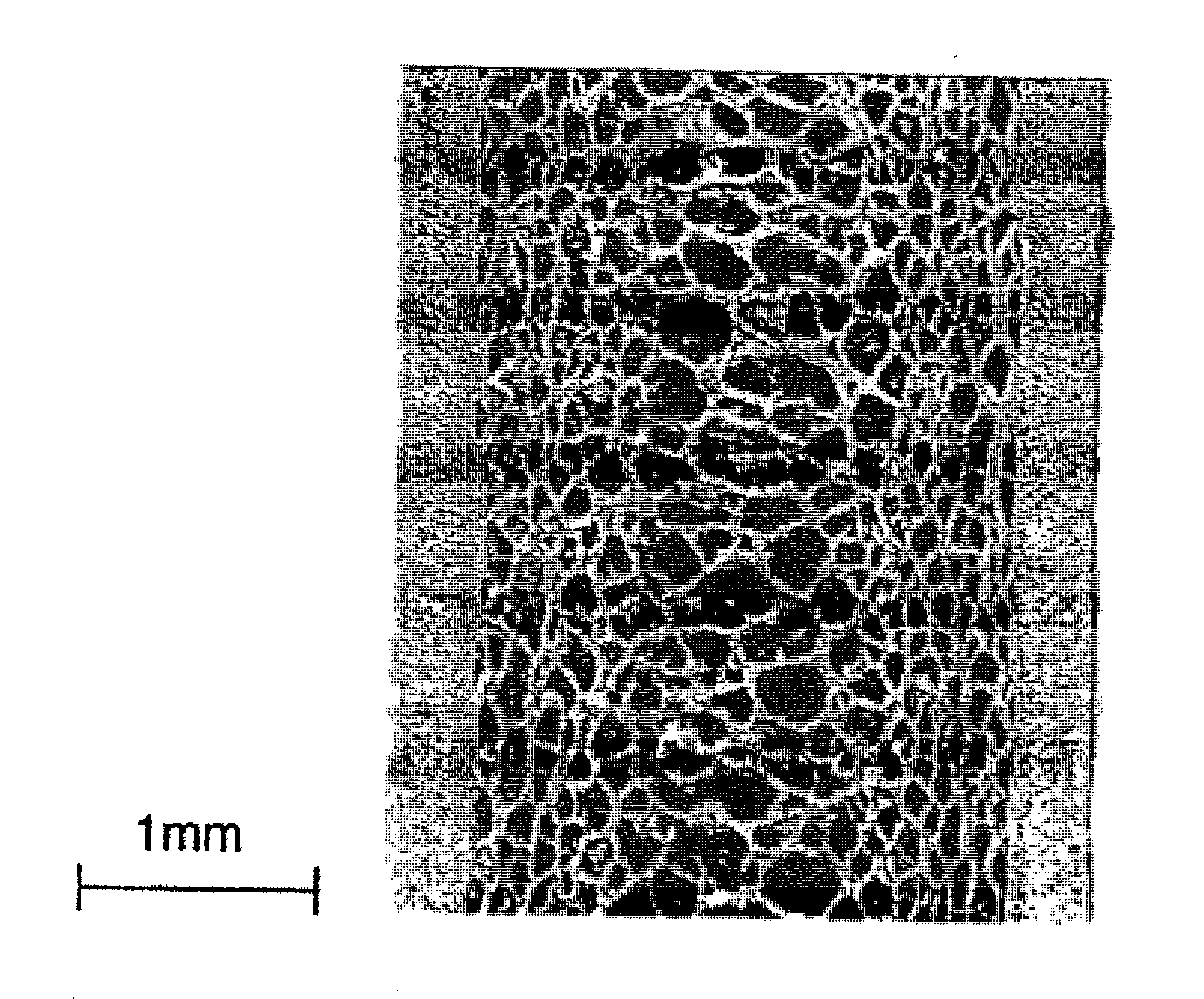Foaming polypropylene resin composition and molded foam using the same
a polypropylene resin and composition technology, applied in the field of foaming polypropylene resin compositions, can solve the problems of insufficient melt tension of resin, insufficient expansion cell mt, and inability to meet the demand for weight reduction, etc., to achieve excellent cell formation ability, high mechanical strength, and excellent appearance
- Summary
- Abstract
- Description
- Claims
- Application Information
AI Technical Summary
Benefits of technology
Problems solved by technology
Method used
Image
Examples
examples
The present invention will be described in detail by presenting examples hereinbelow without limiting the scope of the invention.
[Injection Foam Molding Process]
In Examples and Comparative Examples, injection foam molding was performed under the following conditions.
Injection molding apparatus: MD350S-III manufactured by UBE MACHINERY CORPORATION, LTD. (clamping force: 350 t)
Mold:
Cavity size: 400 mm in length, 200 mm in width, 1.2 mm in thickness
Gate: direct gate at the center of the cavity
Injection resin temperature: 210° C.
Mold surface temperature: 45° C.
Injection time: 1.0 second (from the initiation of injection to the completion of injection of the molten resin)
Foam Molding Conditions
Mold cavity clearance at completion of the foaming step: 3.0 mm
Core-back speed: 20 mm / sec
Delay time from injection completion to starting of expansion: 0 to 1 second
Mold cavity clearance (L0) at injection starting: 1.2 mm
[Measurement and Evaluation Methods]
In Examples and Comparative Examples, prop...
example 1
A foaming resin composition was prepared by mixing and pelletizing:
66 parts by weight of a Ziegler-Natta catalyzed propylene / ethylene block copolymer (component A) which had MFR230 of 110 g / 10 min and in which MFR230 of a normal temperature paraxylene insoluble component (Xinsol) was 240 g / 10 min, the isotactic pentad fraction of a propylene homopolymer component was 97.5%, the content of a normal temperature paraxylene soluble component (Xsol) was 12 wt %, and [η] of the normal temperature paraxylene soluble component (Xsol) was 4.0 dl / g;
3 parts by weight of a high-molecular weight homopolypropylene (component B-1) (containing 19 wt % of a component with an intrinsic viscosity [η]1 at 135° C. in tetralin of 16 dl / g, and 81 wt % of a component with an intrinsic viscosity [η]2 of 0.57 dl / g, [η]total=3.5 dl / g);
17 parts by weight of a single-site catalyzed, low-molecular weight ethylene / 1-butene copolymer (EBR) (A-35070S manufactured by Mitsui Chemicals, Inc.) (component C-1) having a ...
example 2
A foaming resin composition was produced in the same manner as in Example 1, except that the component (A) and the component (B-1) were used in amounts of 64 parts by weight and 5 parts by weight, respectively. The composition was foamed and the molded foam was evaluated in the same manner as in Example 1. The results are set forth in Table 1.
PUM
| Property | Measurement | Unit |
|---|---|---|
| Temperature | aaaaa | aaaaa |
| Temperature | aaaaa | aaaaa |
| Weight | aaaaa | aaaaa |
Abstract
Description
Claims
Application Information
 Login to View More
Login to View More - R&D
- Intellectual Property
- Life Sciences
- Materials
- Tech Scout
- Unparalleled Data Quality
- Higher Quality Content
- 60% Fewer Hallucinations
Browse by: Latest US Patents, China's latest patents, Technical Efficacy Thesaurus, Application Domain, Technology Topic, Popular Technical Reports.
© 2025 PatSnap. All rights reserved.Legal|Privacy policy|Modern Slavery Act Transparency Statement|Sitemap|About US| Contact US: help@patsnap.com



